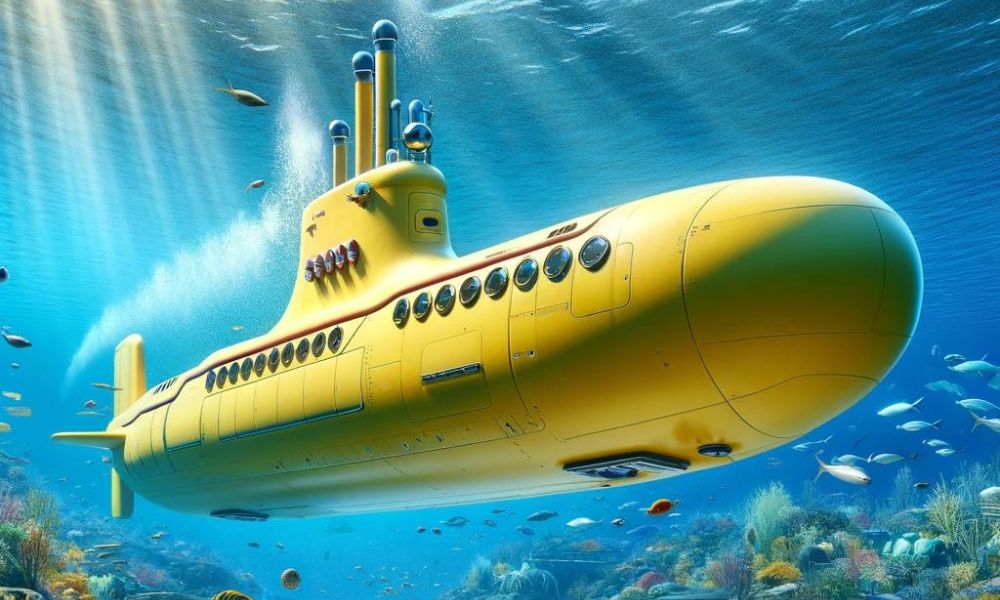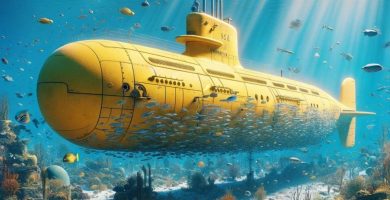
Submarines are marvels of modern engineering that allow humans to explore and operate in the depths of the ocean, an environment that, despite being on our own planet, is as hostile and unfamiliar as outer space. These submersible craft combine principles of physics, mechanics and advanced technology to perform a wide range of tasks, from scientific research to military defence. In this post, we will explore in detail how submarines work, covering their buoyancy, propulsion, life support systems, navigation and communication.
Buoyancy and Dive Control
Buoyancy is the ability of an object to float or submerge in a fluid, and is the fundamental principle on which the operation of a submarine is based. This ability is controlled by adjusting the density of the submarine in relation to the surrounding water.
Ballast tanks
Submarines have special compartments known as ballast tanks, which can be filled with water or air. At the start of a dive, the ballast tanks are filled with water to increase the density of the submarine, causing it to submerge. To ascend, the submarine uses compressed air systems to blow the water out of the tanks, decreasing its density and allowing it to float to the surface.
Trimming Tanks
In addition to the main ballast tanks, submarines use trim tanks to adjust their inclination and orientation underwater. By filling or emptying these tanks in different parts of the submarine, operators can control their angle of ascent or descent and maintain stability.
Submarine propulsion
Modern submarines typically use one of two main propulsion systems: diesel-electric propulsion or nuclear propulsion.
Diesel-Electric Propulsion
Diesel-electric submarines generate electricity using diesel engines, which then power electric motors for propulsion. However, diesel engines require oxygen from the air to operate, so these types of submarines can only be operated on the surface or used while submerged with the help of snorkels to access the outside air. The electricity generated is also used to charge batteries that can power the submarine when it is fully submerged.
Nuclear Propulsion
Nuclear submarines use nuclear reactors to generate heat, which in turn produces steam. This steam drives turbines connected to propeller shafts, providing a powerful and constant source of power that can keep the submarine running for years without the need for refuelling. Nuclear propulsion eliminates dependence on oxygen, allowing these submarines to remain submerged for extended periods.
Life Support Systems
Sustaining human life underwater for long periods requires complex life support systems that regulate air, water, food and waste disposal.
Air Regeneration
The air inside a submarine is recycled using CO2 scrubbers, which remove carbon dioxide, and oxygen generators, which replenish oxygen. These systems ensure that the atmosphere inside the submarine is habitable during extended missions.
Food and Water
Water is produced by desalination of seawater, and food is stored in the form of rations that can last for several months. Modern submarines are also equipped with galley facilities to prepare meals.
Navigation and Communication

Underwater navigation is mainly carried out through sonar and inertial navigation systems. Sonar uses sound waves to detect objects and measure distances underwater, while inertial navigation uses accelerometers and gyroscopes to determine the submarine’s position and orientation.
Communication with the outside world is more challenging underwater, as high-frequency radio waves do not propagate well. Submarines mainly use very low frequency (VLF) and extremely low frequency (ELF) communications to receive messages. To send communications, they often have to approach the surface and use more conventional communication systems.
Conclusion
Submarines are impressive examples of engineering and technology, designed to operate in one of the most challenging environments on Earth. Through the careful application of physics and mechanical principles, coupled with advanced life support, propulsion and navigation systems, submarines continue to play crucial roles in scientific exploration, national defence and beyond. Their ability to operate hidden beneath the waves makes them invaluable strategic and research tools, opening up the ocean depths for human discovery and protection.


